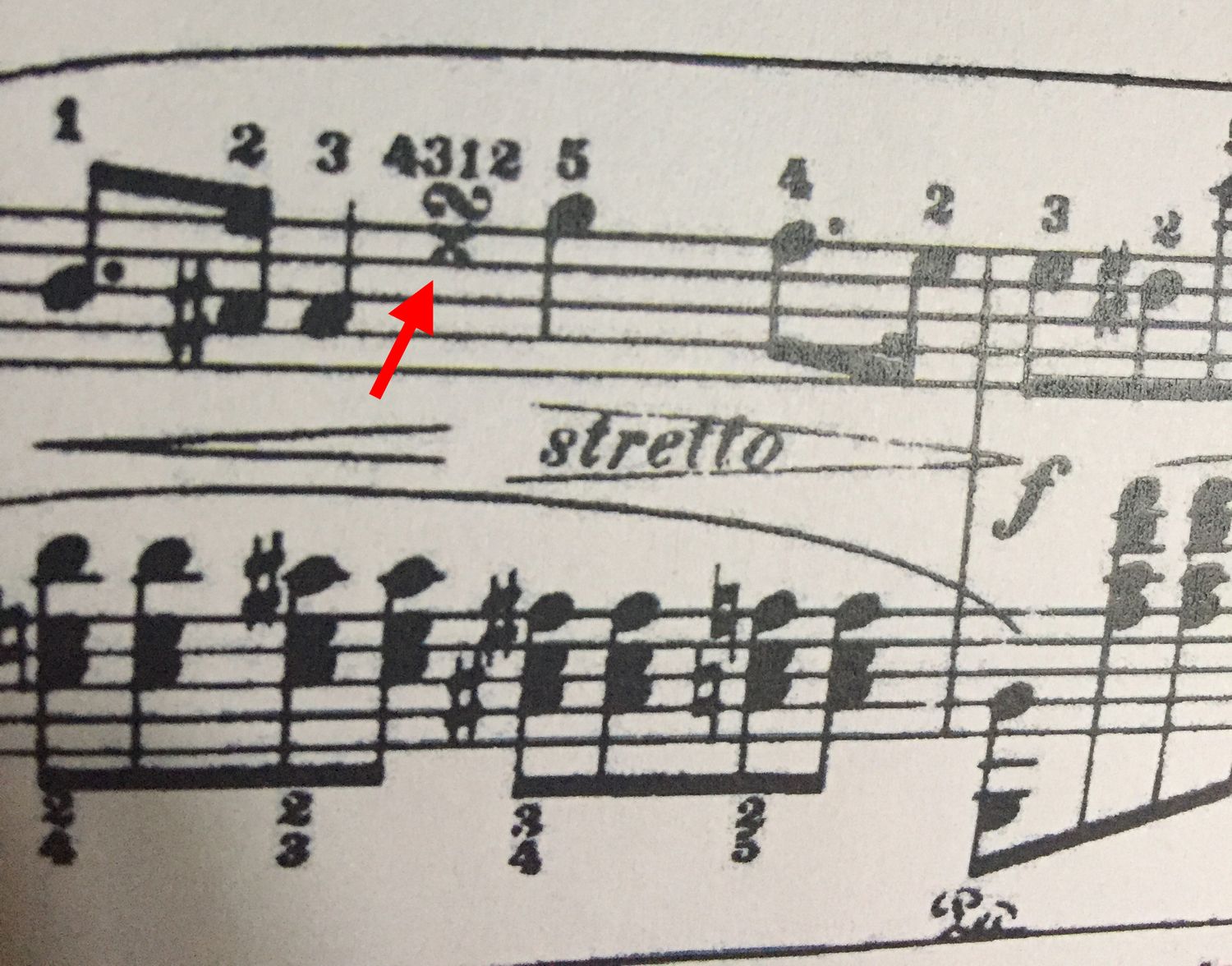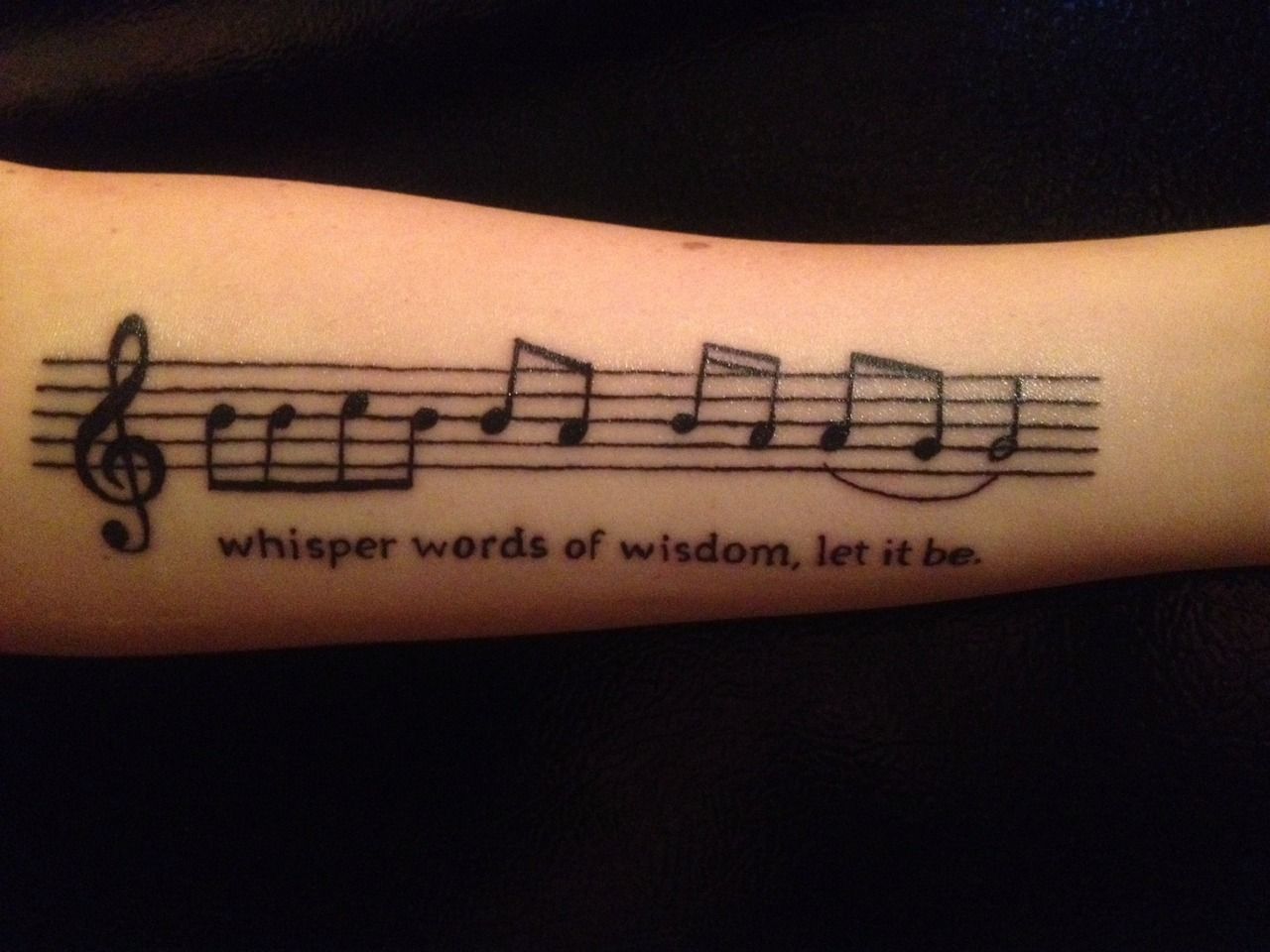Home>Production & Technology>Sheet Music>What Does The P Mean In Sheet Music


Sheet Music
What Does The P Mean In Sheet Music
Published: November 30, 2023
Discover the meaning of the "P" in sheet music and how it impacts your performance. Explore the significance of sheet music and uncover its secrets for a flawless musical rendition.
(Many of the links in this article redirect to a specific reviewed product. Your purchase of these products through affiliate links helps to generate commission for AudioLover.com, at no extra cost. Learn more)
Table of Contents
Introduction
Sheet music is the written or printed form of musical notation. It serves as a vital tool for musicians, providing a roadmap to accurately perform a composition. Every symbol and marking on a sheet of music holds significant meaning, guiding the musician in terms of rhythm, pitch, dynamics, and much more. One such symbol that often grabs the attention of performers and enthusiasts is the letter “P” found commonly on sheet music.
In this article, we will unravel the mystery behind the “P” symbol in sheet music. We will explore its origins, discuss its purpose, and shed light on its practical application for musicians. Understanding the meaning behind this symbol will enhance our appreciation for the intricacies of musical notation and give us greater insight into the intentions of composers throughout history.
So, whether you are a seasoned musician, a curious enthusiast, or someone new to the world of sheet music, join us as we embark on this journey to uncover the significance of the “P” symbol in the realm of musical notation.
The Origins of Sheet Music
The history of sheet music dates back centuries, with its roots firmly planted in medieval music notation practices. Before the invention of the printing press, sheet music was meticulously transcribed by hand, making it a precious and labor-intensive endeavor. Monks and scribes played a crucial role in preserving musical compositions by transcribing them onto parchment or vellum.
One of the earliest known forms of musical notation is the neumes, a system of symbols used to indicate melodic contours. However, it was the development of staff notation in the 11th century that revolutionized the way music was transcribed. Staff notation provided a standardized system of lines and spaces, enabling composers to convey both pitch and rhythm accurately.
As the popularity of music grew during the Renaissance period, demand for printed sheet music became more significant. The invention of the printing press in the 15th century brought about a revolution in the production and distribution of music. Composers and publishers could now disseminate their works more efficiently, making sheet music more accessible to musicians and music enthusiasts alike.
Over the centuries, sheet music has evolved in both form and function. Today, it continues to serve as a valuable resource for musicians, enabling them to learn, interpret, and perform musical compositions with precision and accuracy.
The Purpose of Musical Notation
Musical notation is a system of symbols, markings, and notations used to represent the various elements of music. It serves as a universal language that allows musicians to communicate and interpret musical ideas accurately. The purpose of musical notation is threefold: to preserve compositions, to transmit musical instructions, and to enable musicians to recreate a piece of music as faithfully as possible.
By notating a piece of music, composers can preserve their musical ideas for future generations. Sheet music acts as a tangible record of their creative expressions, ensuring that their music can be performed and appreciated long after they are gone. Without musical notation, countless masterpieces from classical to contemporary genres would be lost to time.
Musical notation also serves as a means of transmitting specific instructions to the performers. It provides guidance on elements such as rhythm, pitch, dynamics, articulation, and tempo. This information allows musicians to accurately interpret a composition and bring out the intended musical expression. It ensures a level of consistency and precision, even when different musicians perform the same piece.
Furthermore, musical notation empowers musicians to recreate a piece of music faithfully. It acts as a roadmap, guiding performers through the intricacies and nuances of a composition. The symbols and markings on the sheet music help musicians understand the structure, phrasing, and overall intent of the music. It enables them to make informed decisions about interpretation, dynamics, and other expressive elements, resulting in a meaningful and authentic performance.
In essence, musical notation plays a vital role in the preservation, transmission, and performance of music. It enables composers to share their musical visions, provides clear instructions for performers, and allows musicians to bring a composition to life with accuracy and artistic interpretation.
Understanding Sheet Music Symbols
Sheet music is filled with various symbols that convey important information to musicians. Understanding these symbols is crucial for accurately interpreting and performing a musical composition. Let’s explore some of the most common symbols found in sheet music:
- Treble and Bass Clef: The treble clef (or G clef) and bass clef (or F clef) are symbols used to indicate the range of notes on the staff for different instruments. The treble clef is typically used for higher-pitched instruments like the violin and flute, while the bass clef is used for lower-pitched instruments like the cello and bass guitar.
- Notes: Notes are the basic building blocks of sheet music. They represent specific pitches and durations. Each note is placed on a specific line or space on the staff, and its shape indicates its duration. Common note types include whole notes, half notes, quarter notes, and eighth notes.
- Rests: Rests indicate periods of silence or pauses in the music. They are represented by symbols of various shapes and durations, similar to notes. Rests are essential for maintaining proper rhythm and timing in a musical composition.
- Dynamics: Dynamics are symbols that indicate the volume or intensity of the music. Common dynamic markings include pianissimo (very soft), piano (soft), mezzo forte (moderately loud), and forte (loud). These symbols guide performers in shaping the overall expression and emotional impact of the music.
- Articulation: Articulation symbols indicate how individual notes should be played in terms of attack, duration, and release. They include staccato dots (playing notes short and detached), legato lines (playing notes smoothly and connected), and accents (emphasizing a particular note).
- Tempo Markings: Tempo markings indicate the speed or pace of the music. They are often indicated in Italian terms, such as allegro (fast), moderato (moderate), and adagio (slow). These markings help musicians maintain a consistent tempo throughout the piece.
These are just a few examples of the many symbols found in sheet music. Familiarizing yourself with these symbols will greatly enhance your ability to read and interpret sheet music accurately, enabling you to bring the compositions to life with musicality and precision.
What Does the “P” Mean in Sheet Music
The “P” in sheet music is an abbreviation for the Italian term “piano,” which means “soft.” It is used as a dynamic marking to indicate that the music should be played softly or with a gentle touch. The “P” symbol is typically placed above or below the staff, next to the specific section or passage where the soft dynamics should be observed.
The purpose of the “P” symbol is to guide performers in understanding the composer’s desired dynamic expression. It helps to shape the overall emotional narrative of the music by conveying a sense of delicacy, subtlety, and introspection. By playing softly, musicians can create contrast within a piece, allowing for moments of tension and release.
It is important to note that dynamic markings like “P” are subjective and open to interpretation. The exact level of softness will vary depending on the musical context and the performer’s artistic interpretation. Therefore, it is crucial for musicians to consider the surrounding elements of the music, such as tempo, phrasing, and other dynamic markings, to achieve a balanced and cohesive performance.
The use of dynamic markings like “P” allows composers to communicate their artistic intentions clearly, even without being present during the performance. It ensures that their desired expression is conveyed to the musicians and ultimately to the listeners. This helps to maintain the integrity and authenticity of the composition, regardless of who performs it.
It’s worth mentioning that the dynamic markings used in sheet music are not limited to just “P” for soft. There are various other markings that indicate different levels of volume, such as mezzo piano (moderately soft), pianissimo (very soft), and piano dolce (soft and sweet). These markings, including “P,” serve as tools for performers to understand and effectively communicate the intended dynamics of the music.
Overall, the “P” symbol in sheet music marks a section or passage where the music should be played softly. It adds depth, nuance, and emotional expression to the composition. By adhering to dynamic markings like “P,” musicians can bring out the subtleties and intricacies of the music, delivering a captivating and engaging performance.
Historical Context of the “P” Symbol
To understand the historical context of the “P” symbol in sheet music, we must delve into the development of musical notation and the evolution of dynamic markings. While the modern dynamic markings we use today originated in the early 17th century, the concept of indicating changes in volume dates back even further.
During the medieval and Renaissance periods, composers would often employ verbal instructions to convey changes in dynamics. Phrases such as “allegro” (cheerful) indicated a lively or spirited performance, while “piano” and “forte” were used to denote changes in volume. However, it wasn’t until the Baroque era that dynamic markings began to be more standardized.
The precise origin of the “P” symbol is uncertain, but it is believed to have emerged in Italy during the 18th century. Italy was a hub of musical activity and innovation during this time, with influential composers like Vivaldi, Scarlatti, and Corelli paving the way for new musical forms and conventions. It is likely that the “P” symbol developed as a shorthand notation for “piano” during this period.
Sheet music from the 18th century shows instances of dynamic markings represented as letters rather than words. These letter abbreviations were often derived from Italian words. For example, “F” represented “forte” (loud), “M” stood for “mezzo” (moderate), and “P” denoted “piano” (soft).
The use of letter abbreviations for dynamic markings continued into the Classical and Romantic periods. Composers like Mozart, Beethoven, and Chopin incorporated these markings extensively in their compositions. As sheet music became more standardized and widely disseminated, these abbreviations became a universal language understood by musicians across different regions and languages.
While the exact graphic representation of the “P” symbol has evolved over time, the meaning behind it has remained constant. It continues to serve as a visual cue for performers to play softly, adding depth and expression to the composition.
Today, the “P” symbol is recognized and utilized by musicians worldwide. It stands as a testament to the historical development of musical notation and the ongoing quest for effective communication of musical expression. The “P” symbol reminds us of the rich cultural heritage and lineage of sheet music, enabling us to connect with the musical traditions of the past and carry them forward into the future.
Modern Interpretation of the “P” Symbol
In the modern interpretation of the “P” symbol in sheet music, the concept of playing softly remains consistent. However, there is room for individual interpretation and nuances in the execution. Musicians are encouraged to bring their own artistic sensibilities and personal touch to their performance, while still adhering to the composer’s intended dynamics.
While the sheet music provides the foundation, it is up to the performer to breathe life into the composition through their expressive choices. Playing softly requires a delicate touch and control to produce a smooth and gentle sound. It involves subtle variations in volume, tone, and articulation to create a sense of intimacy and sensitivity in the music.
Musicians approach the “P” symbol with a refined technique, employing techniques such as feather-light finger pressure, a lighter bow stroke, or restrained breath control, depending on their instrument. They pay attention to the phrasing and musical context surrounding the “P” symbol to achieve the desired effect and maintain the overall flow of the piece.
Furthermore, the interpretation of the “P” symbol may also be influenced by the acoustic characteristics of the performance space. Musicians must adapt their playing to suit the venue, considering factors such as room size, audience size, and acoustics. They may need to adjust their dynamics slightly to ensure a balanced and nuanced performance in different settings.
Varying musical genres and styles may also result in different interpretations of the “P” symbol. For example, in a classical piano piece, playing softly may involve a controlled and restrained touch. In a jazz ballad, on the other hand, the “P” symbol may call for a more introspective and tender approach. Musicians must consider the genre and style of the music they are performing to make informed artistic decisions.
Overall, the modern interpretation of the “P” symbol is not rigid or formulaic. It allows musicians the freedom to explore their creativity and express their musicality. Playing softly requires sensitivity and an understanding of the nuances of the composition, enabling performers to captivate their audience with subtle and expressive performances.
Practical Application of the “P” Symbol
The “P” symbol in sheet music has practical implications for musicians in a variety of ways. Let’s explore some practical applications of the “P” symbol:
Expression and Interpretation:
The “P” symbol guides musicians in expressing a soft and gentle character in the music. It encourages the performers to showcase their ability to control their dynamics and bring out the subtleties in a composition. Musicians can experiment with different techniques and nuances, such as using a lighter touch, subtly adjusting their tone, or employing elegant phrasing to achieve a delicate and nuanced performance.
Balance and Contrast:
The use of the “P” symbol helps to create a sense of balance and contrast within a piece of music. By incorporating soft dynamics alongside louder or more intense sections, musicians can heighten the emotional impact and create a more dynamic and engaging performance. The contrast between the “P” passages and louder sections adds depth, suspense, and musical tension.
Collaboration and Ensemble Playing:
In ensemble playing, the “P” symbol plays a crucial role in creating balance and coherence. It ensures that different instrumental sections or voices within an ensemble can blend together effectively. Musicians must listen attentively to each other, adjusting their dynamics accordingly, to achieve a cohesive and unified performance.
Expressing Musical Intent:
The “P” symbol allows composers to convey their musical intentions more precisely. By indicating specific sections or moments where a soft dynamic is desired, they can guide musicians in achieving the desired expression and emotional impact. It enables performers to align their interpretation with the composer’s vision, ensuring a faithful and authentic rendition of the music.
Creating Atmosphere and Mood:
The soft dynamics represented by the “P” symbol contribute to establishing the atmosphere and mood of a composition. Whether it is conveying intimacy, tranquility, vulnerability, or a sense of introspection, playing softly can evoke a wide range of emotions in the listener. Musicians should pay attention to the context, musical style, and emotional intent of the piece to create the appropriate atmosphere and invoke the desired emotional response.
Overall, the practical application of the “P” symbol allows musicians to fine-tune their playing, create expressive interpretations, collaborate effectively, and convey the composer’s intentions. It adds depth and musicality to performances, enhancing the overall impact and experience for both musicians and listeners alike.
Conclusion
Sheet music is a rich and complex language that allows musicians to communicate and interpret musical compositions. The “P” symbol, representing soft dynamics, holds significant meaning in the realm of musical notation. Understanding its origins, purpose, and practical application adds depth to our musical knowledge and enhances our ability to perform with accuracy and expression.
Throughout history, the development of musical notation and dynamic markings has provided composers and performers with a means to convey emotions, create contrast, and shape the overall narrative of a composition. The “P” symbol, originating from the Italian word “piano,” signifies the instruction to play softly, adding delicacy and nuance to the music.
In the modern interpretation, the “P” symbol grants musicians the freedom to express their artistic individuality and adapt to various styles and genres. It allows for interpretation and nuances, as performers bring their own artistic sensibilities and techniques to create a captivating and engaging performance.
The practical application of the “P” symbol demonstrates its importance in expression, balance, collaboration, and the creation of atmosphere and mood in musical performances. Musicians can use it as a tool to communicate and deliver the intended emotions of the composition, capturing the attention and hearts of the audience.
In conclusion, the “P” symbol in sheet music carries a powerful message to musicians: to play softly and delicately. Its historical context, modern interpretation, and practical application all contribute to the rich and nuanced language of music. By understanding and embracing the significance of the “P” symbol, musicians can bring out the true essence of a composition, creating unforgettable and transformative musical experiences.











